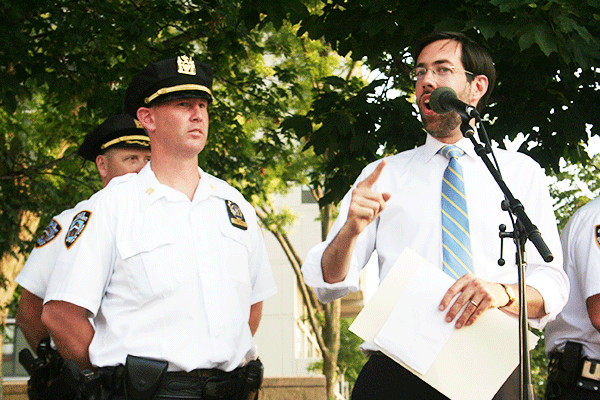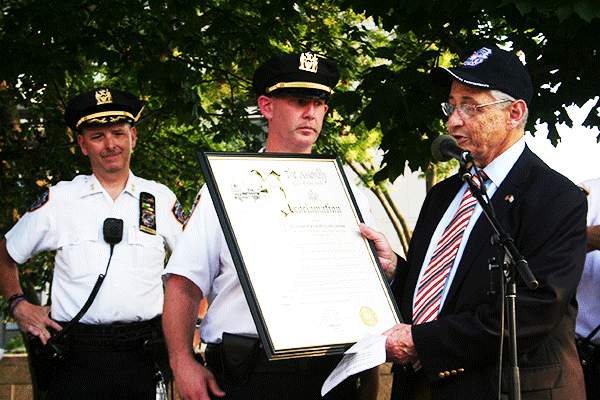
State Sen. Squadron
BY JOSH ROGERS | Downtown school advocates have been better than the city at forecasting the growing need for schools in recent years, and now there’s a new state law requiring the New York City to adopt some of their methods.
The law, which Gov. Andrew Cuomo signed Monday, requires the city’s School Construction Authority to consider information like birth rates and upcoming residential building construction before projecting future school needs for the five-year capital plan.
The bill was co-sponsored by Assembly Speaker Sheldon Silver and State Sen. Daniel Squadron, two Downtown legislators who have fought for years alongside local advocates to get more schools built in Community Board 1 — where population growth over the last decade has dwarfed all other parts of the city.
Silver and Squadron praised Eric Greenleaf, a member of Silver’s School Overcrowding Task Force, for coming up with more accurate ways to predict school needs.
“The truth is Eric Greenleaf, who is a Community Board 1 resident has repeatedly done a better job of knowing what the school population of Lower Manhattan is going to be than the schools have, and that’s wrong,” Squadron said to cheers at the June C.B. 1 meeting, just after the legislation passed the Assembly and Senate.
Squadron said then that he had been working on the bill for five years, but one of the keys to success this year was that he and Silver had the support of the School Construction Authority and the City Dept. of Education. Squadron said the change in attitude was not solely due to a new mayoral administration — he and Silver made adjustments to the bill in response to S.C.A. concerns.

Assembly Speaker Silver appeared last week at the First Precinct’s National Night Out event.
An official for both school agencies said in a statement prior to the bill being signed into law, “We share Speaker Silver and Senator Squadron’s commitment to reducing overcrowding in our city and are excited to continue our work with them to achieve that goal.”
But, speaking on background, the official also pushed back on the notion that the law would change what the city has been doing, saying school planners already collect information from many agencies including the departments of Buildings and Health, and that past projections have been accurate within two percent.
While that presumably is true citywide, the norm in Lower Manhattan in recent years has been for officials to insist there was enough space, only to find kindergarten waiting lists of 100 or so in Tribeca, Battery Park City and FiDi combined.
This year the initial waiting list number was “only” 52 at P.S. 276 in Battery Park City, but that lower number was only made possible because Tribeca’s P.S. 234 took an additional two kindergarten classes, and several pre-K classes were eliminated in Lower Manhattan schools.
By June, all of the waitlisted 5-year-olds were offered seats in Downtown schools, but Greenleaf told Downtown Express then that was not a sustainable situation, given the birth rates and the extra classes this year at P.S.234.
In a press release this week announcing the law’s signing, Greenleaf said the city’s schoolchildren are the “winners” and the legislation “places a new emphasis on using neighborhood-level data, and more useful data, such as building permits for new apartments and houses and mapping recent births, will help the Department of Education forecast enrollments more accurately.”
Silver has said the law should help get schools built more in line with demand, and in a statement this week said, “In my own Lower Manhattan community, families spend anxious months with their children on waitlists that can run over 100 names only to find classrooms filled to the brim and schools far over their capacity.”
Though it took five years to pass, when it came to a vote in both houses there was only one no vote: State Sen. Greg Ball, a Republican who represents north Westchester and Putnam County.
































